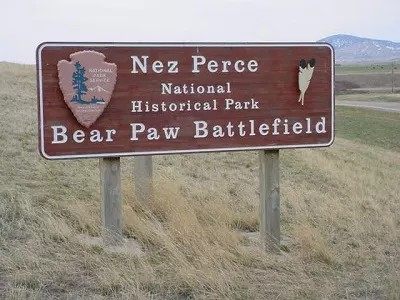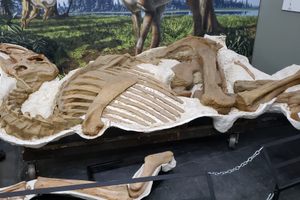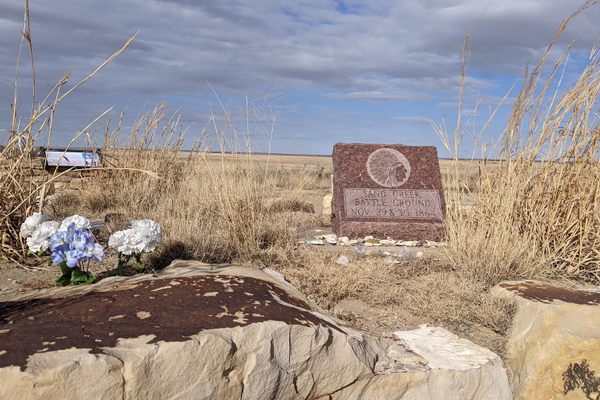About
The National Park Service in the United States includes a number of historic battlefields. Many of these, especially the Civil War battlefields, are located near populous areas or major highways and are relatively easy to travel to. But, the Bear Paw Battlefield, which is part of the Nez Perce National Historic Park, is in one of the most remote locations within the continental United States.
In 1877, the Nez Perce tribe (also known as nimiipuu) had been relocated to a reservation near Lewistown, Idaho. Members of the tribe as well as other Native Americans had been the victims of murder and other crimes by white settlers in the area, so in mid-June, a few members of the tribe initiated a series of reprisal raids. This led to a series of violent events that escalated until the Nez Perce were in a full military conflict with the United States Army. However, the Nez Perce took a different approach than most other Native American tribes did in this situation: they fled.
Over the course of several months, the Nez Perce would travel 1,170 miles (1,880 km) over the Rocky Mountains, through Yellowstone National Park, and then northwards across Montana while trying to escape the United States Army and while trying to find some form of sanctuary. The tribe had fought several additional battles along the way, and in the process, they had taken many casualties and lost many belongings. However, the Nez Perce generally avoided committing any acts of violence against any white civilians that they encountered. Although several chiefs led the tribe, news accounts of the Nez Perce tended to focus on Chief Joseph because of his Christian name.
The tribe was on their way to Canada when, on September 30, American soldiers led by Colonel Nelson Miles caught up with them in a grassy coulee in the northern plains of Montana to the north of the Bears Paw Mountains. At this point in time, the Nez Perce and their horses were physically exhausted, and they were also exposed to the cold and snow. They continued to fight, but the members of the tribe were in no condition to continue resisting or to continue fleeing. On October 5, a day after another Army force led by General Oliver Howard arrived, Chief Joseph agreed to surrender with the majority of his tribe, although a minority of the Nez Perce were able to slip away the night before and reach refuge in Canada. In his surrender, Chief Joseph gave a speech with the notable declaration, “From where the sun now stands, I will fight no more forever."
In the years following the battle, the battlefield was not built upon or otherwise developed, so it remained relatively unchanged. In 1970, it was added to the National Register of Historic Places, and then in 1988, it became part of the National Park system. Today, the site features a few memorials and interpretative signs describing the battle as well as a loop trail around the coulee where the battle took place.
Related Tags
Know Before You Go
The only practical way to reach the Bear Paw Battlefield is by car. The site is located about 16 miles (26 km) south of Chinook, Montana, on Route 240 (also known as Cleveland Road), which is paved all the way to the battlefield. Parking is available at the site.
Be aware that the battlefield is located in open prairie and is surrounded by farmland. The site has no visitor center or on-site interpretive staff; the only facilities are a restroom and a picnic shelter. No businesses are located near the battlefield.
Visitors to the battlefield will be exposed to the elements, including potentially severely cold weather in the winter and severe thunderstorms in the summer. Visitors should check the weather forecast before visiting the site and prepare appropriately for the weather.
Finally, be aware that the battlefield is of special cultural and spiritual significance to the Nez Perce. Visitors are asked to stay on the trail, to not attempt to excavate for or remove any artifacts, and to not disturb any offering left at the site. No pets or vehicles (including bicycles) are allowed on the trail, and camping is prohibited.
Published
November 24, 2022








































